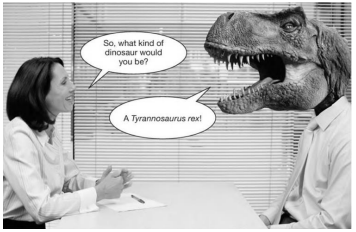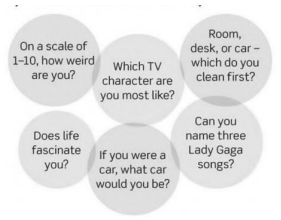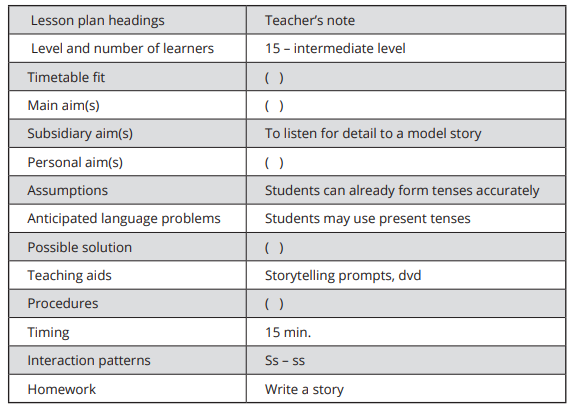Questões de Concurso Sobre inglês para professor - letras
Foram encontradas 158 questões
Resolva questões gratuitamente!
Junte-se a mais de 4 milhões de concurseiros!
The tasks below are adapted versions of the activities, from the textbook, to work with the text. Match Tasks 1 – 6 with their main aim A – I. There are three extra aims which you do not need to use.
Tasks
Task 1 Discuss the questions in small groups.
1 Have you ever been to a job interview? How was the experience? What kind of questions did they ask you? Did you get the job?
2 What kind of questions do you expect to have in a job interview?
3 How can people get better prepared for a job interview?
Task 2 Look at the photo with the article. What do you think is happening? Do you think the question is one that someone might really ask in this situation? Why (not)?

Task 3 Read the article once and find out. How would you answer the question?
Task 4 Look at the highlighted words and phrases in the text. With a partner, try to figure out what they might mean and how you think they are pronounced.
Task 5 Read the article again. Using your own words, answer the questions.
1 What are extreme interviews? 2 What kind of companies first started using them? 3 Why do some people think that they are better than normal interviews?
Task 6 Do you think extreme interviews are a good way of choosing candidates? Which of the questions below (used in real interviews) do you think would work well? Why?

Adapted from: Face2Face Intermediate. Cris Redston and Gillie Cunningham. Cambridge University Press.
Main Aim
A. Integrating skills and personalizing the topic. B. Analyzing text organization. C. Inferring meaning of lexis from context. D. Predicting. E. Teaching grammar inductively using the text. F. Skimming. G. Activating schemata. H. Reading for details. I. Scanning.
(THORNBURY, 2005, p. 91-92)
Considering Thornbury’s (a very famous applied linguistics in the early 2000s) quotation, put the numbers 1 – 5 in the correct place in the following lesson plan:

1. To enable students to use past tenses accurately and put events in order in simple narratives.
2. Students listen to the model story, then, in groups, plan and write their own stories.
3. Use gestures to remind students to use past tenses.
4. To follow on from work on past tenses and to prepare for the storytelling project.
5. To make sure that board writing is clear and readable.
Choose the CORRECT sequence.